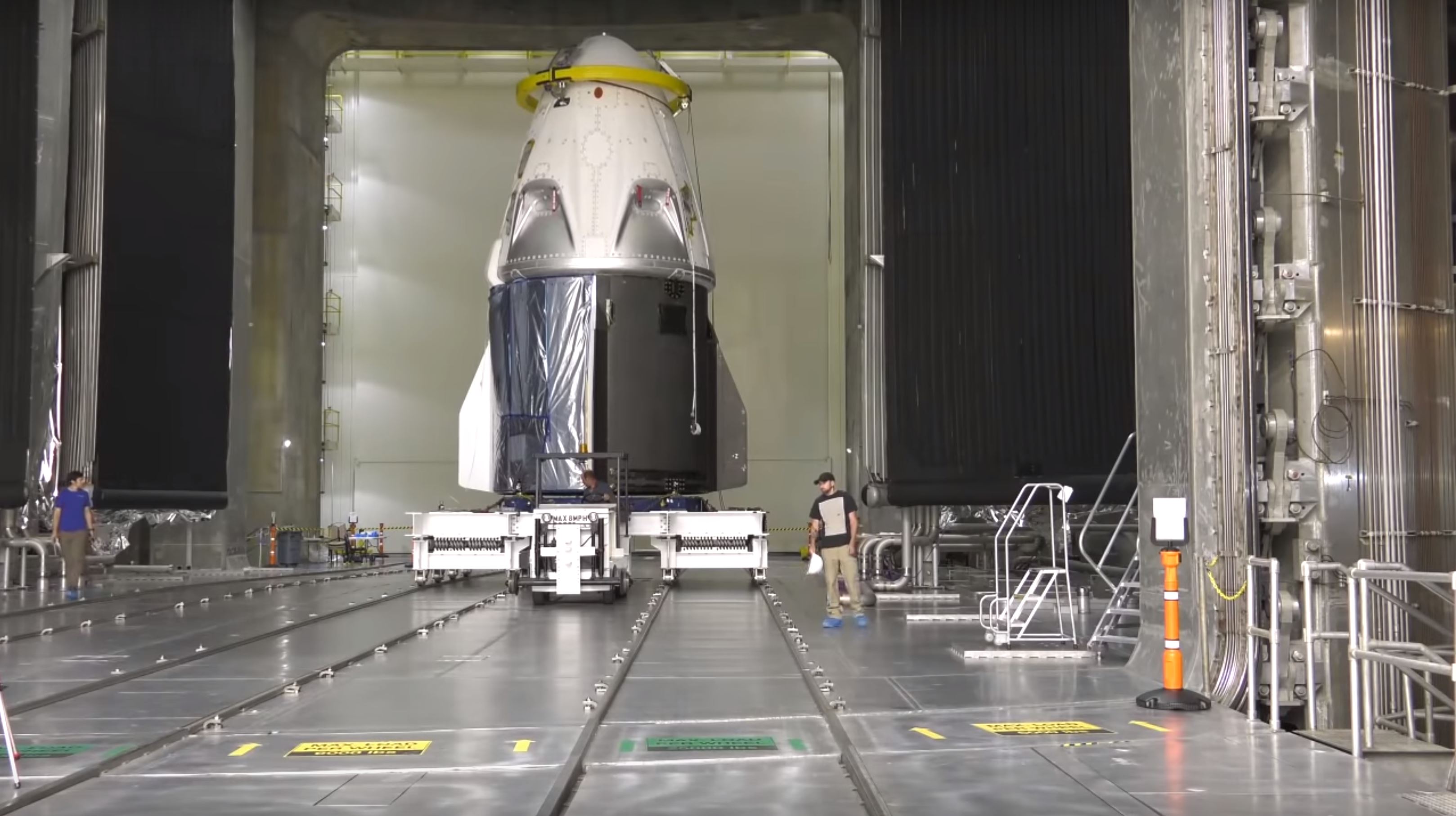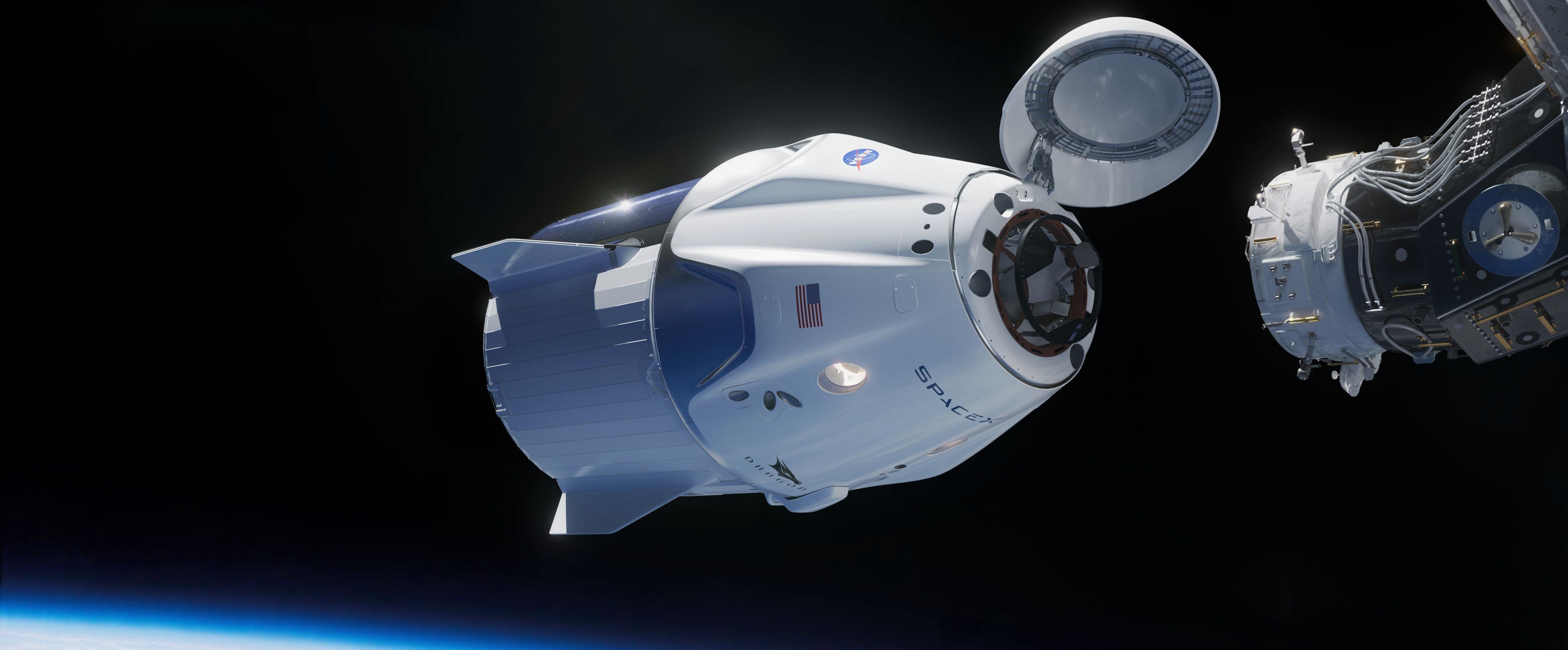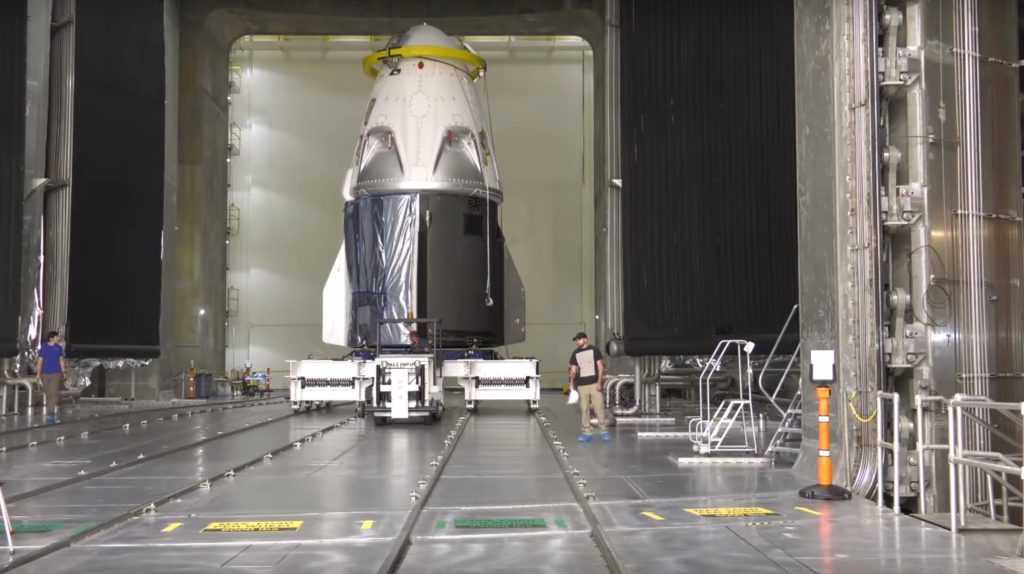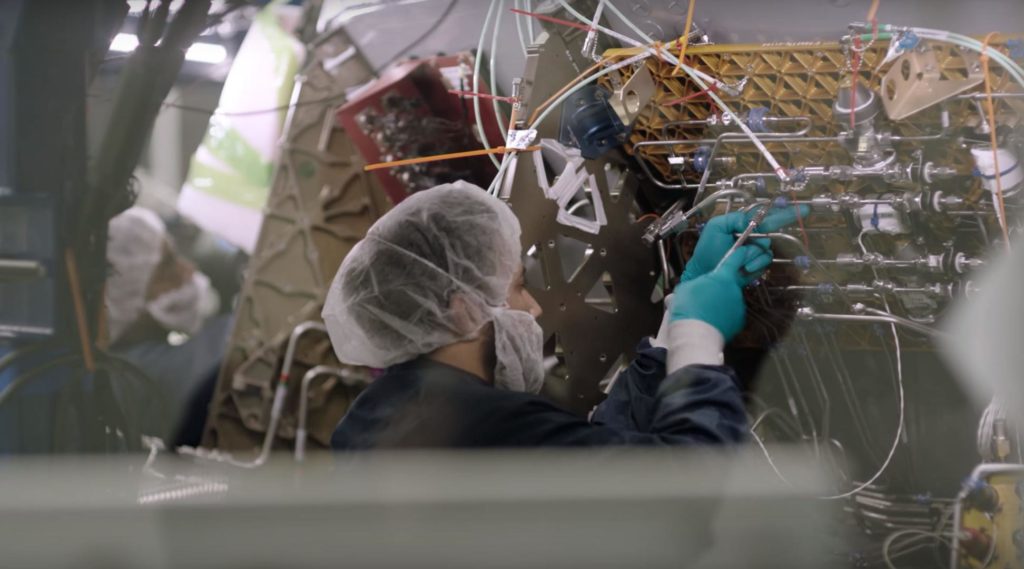

News
SpaceX and NASA reaffirm Crew Dragon’s January 2019 launch debut target
After what can only be described as an attempt to sandbag the official launch schedule, NASA administrator James Bridenstine remains alone in his public implication that the date for SpaceX’s first Crew Dragon test flight (DM-1) is so uncertain that “the first half of 2019” was the closest he would get to an estimate.
Such an uncertain estimate would normally be par for the course of NASA’s Commercial Crew Program (CCP), but the fact remains that SpaceX and NASA have recently filed for and received specific launch date allotments for Crew Dragon’s DM-1 launch, dates little more than 4-6 weeks away from today.
At the NAC HEO meeting, Bill Gerstenmaier says the SpaceX Demo-1 mission is planned “towards the end of January.”
— Jeff Foust (@jeff_foust) December 6, 2018
As such, the fact that NASA associate administrator Bill Gerstenmaier – a critical hands-on leader of NASA’s commercial and exploration programs – specifically stated that NASA and SpaceX are targeting DM-1’s launch in January is an unusually stark indication that the two senior NASA officials are not reading from the same script, so to speak. The reasons for the dramatic differences in official statements separated by just one week are hard to parse and would inevitably tread into waters of pure speculation and political machinations.
What is far more important is that Gerstenmaier – backed up by Phil McCalister, NASA Director of Commercial Spaceflight – reaffirmed that NASA is planning for the first orbital, uncrewed launch of SpaceX’s Crew Dragon as early as January 2019, albeit with a slight 10-day slip since the last specific launch date (January 7) was announced.
Speaking before and after Falcon 9’s recent launch of Cargo Dragon (CRS-16) on December 5th, SpaceX VP of Launch and Build Reliability Hans Koenigsmann added yet another voice to the chorus, stating that he and SpaceX were extremely confident that all the physical hardware and software aspects of Crew Dragon would be ready to launch no later than January 7th.
NASA’s Phil McAlister updates the status of SpaceX’s Demo-1 Crew Dragon spacecraft, and says the company aims to have all hardware ready by Dec. 20, then will stand down for the holidays before resuming launch preps in January. pic.twitter.com/XDubh95PEV
— Stephen Clark (@StephenClark1) December 6, 2018
Why so uncertain?
It’s impossible to fully delve into the complex political and bureaucratic intricacies of modern NASA, but the uncertainty within NASA and the deltas between NASA and SpaceX’s official statements can generally be explained by the simple fact that a number of critical final reviews have yet to be completed, reviews that will offer the final determination of when or if Falcon 9 and Crew Dragon are ready to launch.
Depending on the results of those readiness reviews, DM-1 could be given the go-ahead to launch in January or it could be delayed six months because NASA wants SpaceX to change a number of critical spacecraft systems, two extreme sides of what can be best described as a spectrum of possibilities.
In other words, SpaceX’s Koenigsmann and NASA’s Gerstenmaier and McCalister have since implied that they are confident that those final reviews will look favorably upon launch dates that approximate “ASAP”. Bridenstine, while technically the head of NASA, can thus be treated as a dissenting or outlier opinion in this case, presumably offering a worst-case-scenario of when SpaceX might be able to launch DM-1 if final reviews go very badly.
- SpaceX technicians move the integrated DM-1 Crew Dragon during a vacuum chamber test campaign. (SpaceX)
- A SpaceX employee works on the Crew Dragon assigned to DM-2, the first launch with astronauts aboard. (SpaceX)
- SpaceX installed its Crew Access Arm (CAA) in September 2018. (Tom Cross)
Bridenstine and Koenigsmann’s comments are worth looking at in a bit more depth, subtly but unequivocally pointing to the differences in opinion between NASA and SpaceX that clearly still float just beneath the public surface. Asked about Bridenstine’s suggestion that DM-1 could slip quite a bit, Koenigsmann offered a skeptical but levelheaded response:
“What I could see is a [slip of a] couple of days because of [Space Station] traffic. For example, CRS-16 (Cargo Dragon) is on station at the same time, lots of traffic, lots of crew time requirements, but our target is – at this point in time – mid-January, and we’re pushing as hard and [as diligently] as we can for this particular launch.”
In fact, it appears that NASA and SpaceX concluded, around the same point in time, that a new target of January 17th was preferable to account for the logistical scheduling concerns highlighted by Hans in the above quote, allowing 10 extra days for the International Space Station (ISS) crew to complete other spacecraft operations before Crew Dragon’s planned arrival.

Even more intriguingly, local reporter Ken Kremer followed up with a question specifical triggered by Bridenstine’s suggestion (according to USA Today) that “challenges” with Crew Dragon’s landing parachutes were a leading factor in the unlikelihood of a January launch. Hans responded in his usual deadpan style:
“No; we’re working through issues, obviously, I mean every launch has things that we work through to make sure they work fine. [Dragon 2’s parachutes] actually have more redundancy than those on Dragon 1 and they are also [structurally] reinforced on Demo-1, so pretty sure [they’re] gonna be successful.”
Now we wait.
For prompt updates, on-the-ground perspectives, and unique glimpses of SpaceX’s rocket recovery fleet check out our brand new LaunchPad and LandingZone newsletters!
News
Tesla launches in India with Model Y, showing pricing will be biggest challenge
Tesla finally got its Model Y launched in India, but it will surely come at a price for consumers.

Tesla has officially launched in India following years of delays, as it brought its Model Y to the market for the first time on Tuesday.
However, the launch showed that pricing is going to be its biggest challenge. The all-electric Model Y is priced significantly higher than in other major markets in which Tesla operates.
On Tuesday, Tesla’s Model Y went up for sale for 59,89,000 rupees for the Rear-Wheel Drive configuration, while the Long Range Rear-Wheel Drive was priced at 67,89,000.
This equates to $69,686 for the RWD and $78,994 for the Long Range RWD, a substantial markup compared to what these cars sell for in the United States.
🚨 Here’s the difference in price for the Tesla Model Y in the U.S. compared to India.
🚨 59,89,000 is $69,686
🚨 67,89,000 is $78,994 pic.twitter.com/7EUzyWLcED— TESLARATI (@Teslarati) July 15, 2025
Deliveries are currently scheduled for the third quarter, and it will be interesting to see how many units they can sell in the market at this price point.
The price includes tariffs and additional fees that are applied by the Indian government, which has aimed to work with foreign automakers to come to terms on lower duties that increase vehicle cost.
Tesla Model Y seen testing under wraps in India ahead of launch
There is a chance that these duties will be removed, which would create a more stable and affordable pricing model for Tesla in the future. President Trump and Indian Prime Minister Narendra Modi continue to iron out those details.
Maharashtra Chief Minister Devendra Fadnavis said to reporters outside the company’s new outlet in the region (via Reuters):
“In the future, we wish to see R&D and manufacturing done in India, and I am sure at an appropriate stage, Tesla will think about it.”
It appears to be eerily similar to the same “game of chicken” Tesla played with Indian government officials for the past few years. Tesla has always wanted to enter India, but was unable to do so due to these import duties.
India wanted Tesla to commit to building a Gigafactory in the country, but Tesla wanted to test demand first.
It seems this could be that demand test, and the duties are going to have a significant impact on what demand will actually be.
Elon Musk
Tesla ups Robotaxi fare price to another comical figure with service area expansion
Tesla upped its fare price for a Robotaxi ride from $4.20 to, you guessed it, $6.90.

Tesla has upped its fare price for the Robotaxi platform in Austin for the first time since its launch on June 22. The increase came on the same day that Tesla expanded its Service Area for the Robotaxi ride-hailing service, offering rides to a broader portion of the city.
The price is up from $4.20, a figure that many Tesla fans will find amusing, considering CEO Elon Musk has used that number, as well as ’69,’ as a light-hearted attempt at comedy over the past several years.
Musk confirmed yesterday that Tesla would up the price per ride from that $4.20 point to $6.90. Are we really surprised that is what the company decided on, as the expansion of the Service Area also took effect on Monday?
But the price is now a princely $6.90, as foretold in the prophecy 😂
— Elon Musk (@elonmusk) July 14, 2025
The Service Area expansion was also somewhat of a joke too, especially considering the shape of the new region where the driverless service can travel.
I wrote yesterday about how it might be funny, but in reality, it is more of a message to competitors that Tesla can expand in Austin wherever it wants at any time.
Tesla’s Robotaxi expansion wasn’t a joke, it was a warning to competitors
It was only a matter of time before the Robotaxi platform would subject riders to a higher, flat fee for a ride. This is primarily due to two reasons: the size of the access program is increasing, and, more importantly, the service area is expanding in size.
Tesla has already surpassed Waymo in Austin in terms of its service area, which is roughly five square miles larger. Waymo launched driverless rides to the public back in March, while Tesla’s just became available to a small group in June. Tesla has already expanded it, allowing new members to hail a ride from a driverless Model Y nearly every day.
The Robotaxi app is also becoming more robust as Tesla is adding new features with updates. It has already been updated on two occasions, with the most recent improvements being rolled out yesterday.
Tesla updates Robotaxi app with several big changes, including wider service area
News
Tesla Model Y and Model 3 dominate U.S. EV sales despite headwinds
Tesla’s two mainstream vehicles accounted for more than 40% of all EVs sold in the United States in Q2 2025.

Tesla’s Model Y and Model 3 remained the top-selling electric vehicles in the U.S. during Q2 2025, even as the broader EV market dipped 6.3% year-over-year.
The Model Y logged 86,120 units sold, followed by the Model 3 at 48,803. This means that Tesla’s two mainstream vehicles accounted for 43% of all EVs sold in the United States during the second quarter, as per data from Cox Automotive.
Tesla leads amid tax credit uncertainty and a tough first half
Tesla’s performance in Q2 is notable given a series of hurdles earlier in the year. The company temporarily paused Model Y deliveries in Q1 as it transitioned to the production of the new Model Y, and its retail presence was hit by protests and vandalism tied to political backlash against CEO Elon Musk. The fallout carried into Q2, yet Tesla’s two mass-market vehicles still outsold the next eight EVs combined.
Q2 marked just the third-ever YoY decline in quarterly EV sales, totaling 310,839 units. Electric vehicle sales, however, were still up 4.9% from Q1 and reached a record 607,089 units in the first half of 2025. Analysts also expect a surge in Q3 as buyers rush to qualify for federal EV tax credits before they expire on October 1, Cox Automotive noted in a post.
Legacy rivals gain ground, but Tesla holds its commanding lead
General Motors more than doubled its EV volume in the first half of 2025, selling over 78,000 units and boosting its EV market share to 12.9%. Chevrolet became the second-best-selling EV brand, pushing GM past Ford and Hyundai. Tesla, however, still retained a commanding 44.7% electric vehicle market share despite a 12% drop in in Q2 revenue, following a decline of almost 9% in Q1.
Incentives reached record highs in Q2, averaging 14.8% of transaction prices, roughly $8,500 per vehicle. As government support winds down, the used EV market is also gaining momentum, with over 100,000 used EVs sold in Q2.
Q2 2025 Kelley Blue Book EV Sales Report by Simon Alvarez on Scribd
-

 News3 days ago
News3 days agoTesla debuts hands-free Grok AI with update 2025.26: What you need to know
-

 Elon Musk1 week ago
Elon Musk1 week agoElon Musk confirms Grok 4 launch on July 9 with livestream event
-

 Elon Musk5 days ago
Elon Musk5 days agoxAI launches Grok 4 with new $300/month SuperGrok Heavy subscription
-

 News2 weeks ago
News2 weeks agoTesla Model 3 ranks as the safest new car in Europe for 2025, per Euro NCAP tests
-

 Elon Musk2 weeks ago
Elon Musk2 weeks agoxAI’s Memphis data center receives air permit despite community criticism
-

 News5 days ago
News5 days agoTesla begins Robotaxi certification push in Arizona: report
-

 Elon Musk2 weeks ago
Elon Musk2 weeks agoTesla reveals it is using AI to make factories more sustainable: here’s how
-

 Elon Musk2 weeks ago
Elon Musk2 weeks agoTesla scrambles after Musk sidekick exit, CEO takes over sales





















